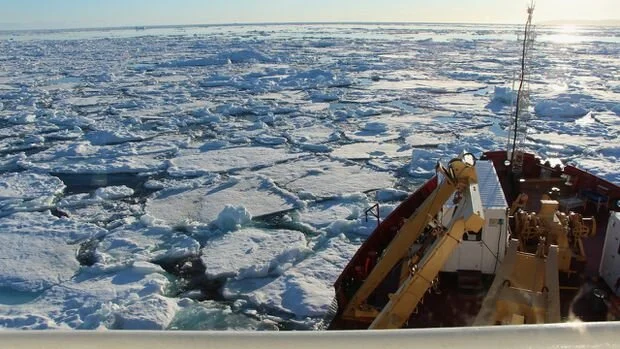Scientists are trying to define a new geological time period to recognise the changes we've made to the planet, and Crawford is their model example. Its sediments have captured fallout from intense fossil fuel burning, and even the plutonium from bomb tests. The muds would be symbolic of the onset of a proposed Anthropocene Epoch.
Hidden Beneath the Surface
In just seven decades, the scientists say, humans have brought about greater changes than they did in more than seven millennia. Never in Earth’s history has the world changed this much, this fast. Never has a single species had the capacity to wreak so much damage — or the chance to prevent so much harm. “It’s a line in the sand,” said Francine McCarthy, a professor of Earth sciences at Brock University in Ontario, who has led research on Crawford Lake. “The Earth itself is playing by a different rule book. And it’s because of us.”
It’s dam time in Prince Rupert with Woodworth Lake water conversion
For the first time in seven years, residents in Prince Rupert will be able to drink water once again from Woodworth Lake, the City of Prince Rupert announced on Feb. 8. With the completion of the new Woodworth Dam in October 2022, water levels have now risen enough to return the supply to the primary source instead of Shawatlans Lake from where it has been pumped since 2016.
Vancouver-based deepsea mining company explains waste-dumping video released by Greenpeace
A B.C. company testing deepsea mining in the Pacific Ocean says the release of discharge directly into the sea was an accident and was quickly resolved. On Wednesday, The Metals Company said that video footage showing fouled water going directly from the company’s mining ship into the ocean, which was released by Greenpeace, was a “minor and temporary event.”
How Acuva balances global growth with local impact to provide clean drinking water
Canada is privileged to have abundant clean drinking water, but that’s not the case globally. Nearly one-third of people worldwide don’t have access to clean drinking water due to microbes and other contaminants, a problem that Manoj Singh thinks he can solve with technology. Singh founded Acuva in 2014 with a mission to enable clean drinking water using technology and so far he’s secured $8.4 million in growth financing to do it.
A new beneficial use for drinking water treatment residuals
Farms in the City of Delta and elsewhere could benefit from residuals from the treatment process that makes our drinking water safe. Metro Vancouver’s Water Committee at its Sept. 7 meeting received an update report on beneficial uses of drinking water treatment residuals, generated by the Seymour Capilano Filtration Plant consisting of sediments, naturally occurring organic matter and treatment chemicals.
Algae flare-up blamed for Calgarians' lingering smelly tap water
Dawn Stewart said she’d never encountered the foul flavour of her home’s tap water until she filled up a glass a few weeks ago. “It was disgusting and I said ‘does it taste like there’s dirt in it?'” “I ran the water for a bit and it was worse — even when I’ve got soap in it, it still has that musty odour.” With no water filters in her Royal Oak home, Stewart said the water’s earthy flavour is a disincentive to drinking it. And initially, she wondered if consuming it posed a health risk.
Canadian Arctic awash in microplastics, study finds
In the first large-scale survey of its kind in the region, researchers sampled more than 30 locations across the eastern Arctic and Hudson Bay and were able to detect microplastics nearly everywhere they looked, including in surface waters, marine sediments and in the guts of zooplankton – the tiny, floating organisms that occupy the base of the Arctic food chain. And while the long-term effects of the materials on the environment and on human health remain largely unknown, the results suggest widespread exposure is becoming inescapable, even for people living in the most remote areas of the globe.









